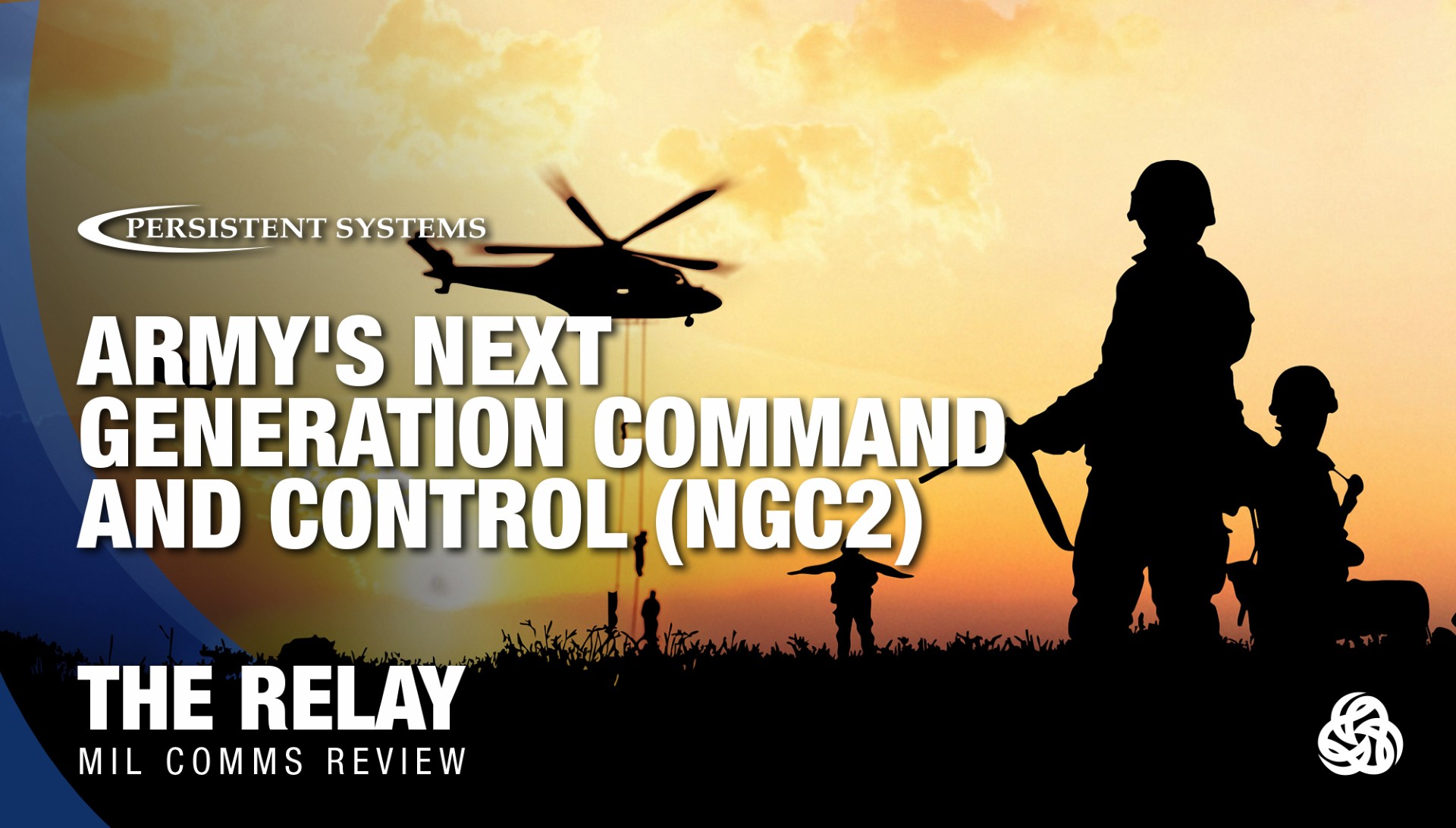The U.S. military calls it Combined Joint All Domain Command and Control, or CJADC2. The concept is to build an expansive, high-speed communications network that connects all things military (sensors, shooters, vehicles, computers, and operations centers), so that we can detect, locate, and react to our enemy before he can fire his first shot.
The Army’s contribution to this ambitious effort is the Next Generation Command and Control (NGC2)—which first began as a proof of concept back in February-March 2024 at the Project Convergence–Capstone 4 (PC-C4) exercise. Since then, the Army has been testing assorted NGC2 tools and awarding related contracts, including one for Persistent Systems.
NGC2 experimentation begins
The 4th Infantry Division (4ID), NGC2’s experimental unit, has already undergone the first live fire training missions with prototype technology, writes Claire Heininger, the communications director for the Army’s Network Cross-Functional Team (CFT).
During Ivy Sting 1, which was held this past September, “new digital fire control software and modern communications equipment” coordinated and directed artillery fire with great effectiveness. And there’s more training exercises to go in the leadup to PC-C6. With each one, 4ID “will incrementally add elements of NGC2 software and hardware into different echelons and mission sets…,” notes Heininger.
Reporting from Ivy Sting I
Writing for Breaking Defense, Mark Pomerleau was one of the reporters at Ivy Sting I. He described the steps that the Army must currently take before directing M777A2 Howitzer fire on a target: starting from the Army Intel Data Platform, then moving on to the strike cell, then on to the Joint Air-Ground Integration Cell, then the Fire Control Element and finally, the Fire Direction Cell.
“That’s a lot of gates to pass data through, especially in time-sensitive combat operations in which the target might just pick up and leave at any moment,” Pomerleau says.
The NGC2 data management tool that was tested at Ivy I is meant to speed up the whole process, 4ID Commander Maj. Gen. Patrick Ellis told Pomerleau and others. Indeed, the Howitzer using the NGC2 tool reacted faster than one relying on the legacy Field Artillery Tactical Data System. But it wasn’t just a matter of comparing one battery to another.
This faster new tool could “allow the Army to mass more combat power and be more dispersed on the battlefield as the mesh networking capabilities with NGC2 allow artillery batteries to operate farther apart,” Pomerleau writes.
NGC2 contracts and our involvement
Speaking of networking capabilities, Persistent Systems was just tapped by the Army’s Program Executive Office Command, Control, Communications, and Network (PEO 3CN) to outfit 4ID with our mobile ad hoc networking (MANET) gear in support of NGC2. This initial order of $34 million follows the successful testing of Persistent technology at Project Convergence Capstone 5 (PC-C5).
During that exercise, our MANET demonstrated its scalability and network capacity when it transported massive amounts of data from cameras, sensors, and software systems across an armored battalion on the move. Backed up by the network, M1A1 tanks and Bradley Fighting Vehicles could coordinate a combined arms breach with precision.
PC-C5 demonstrated the operational advantages of using a MANET over traditional communication systems, currently fielded by the Army. Units and leaders were able to seamlessly access and share data, leading to measurable improvements in operational outcomes during the exercise.
During my time as a Platoon Leader (M1A1 Platoon Leader), connectivity was limited to voice-only communications, and shared situational awareness was virtually non-existent. Seeing the operational advantage of our MANET technology—providing leaders with a shared, cross-domain common operating picture instantly accessible at their fingertips—was not only exciting but honestly made me a little envious.
Persistent Systems MPU5 MANET radios, Personal Transport 5 devices, and other networking hardware ordered by PEO 3CN for 4ID will be tested alongside other tools at the upcoming PC-C6. The ones that demonstrate their effectiveness and unit survivability will then drive Programs of Record for follow-on fielding to multiple Army divisions.
As we shift to PC-C6, with our MANET serving as the transport backbone of the network, the operational impact I witnessed at PC-C5 is only set to grow. Fielding this capability at scale across the division will deliver a resilient and robust network that enhances connectivity and decision-making at all command levels, truly linking sensors, shooters and commanders. Our involvement highlights the critical role of resilient, decentralized communications in enabling Next-Generation Command and Control (NGC2), which is foundational to achieving the speed, agility, and integration required for CJADC2 success.
###
Jon Patrick is the Vice President of Business Development for the Army at Persistent Systems.




